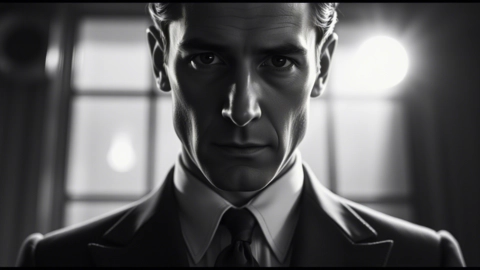Trying to get Qwen to generate the exact image in your head? 🎨 It all starts with the prompt. Qwen is a powerful multimodal AI—but like any image generator, it can only work with what you give it. And how you phrase things matters a lot.
🧠 How to Write Better Prompts
🧩 Build a Perfect Prompt (Step by Step)
🛠️ Advanced Prompting Techniques
🚫 Don’t Make These Prompt Mistakes!
In this guide, you’ll learn how to write clear, creative, and high-impact prompts that help Qwen produce visuals that actually match your vision. From beginner-friendly tips to advanced techniques, everything here is designed to unlock the full potential of Qwen’s image generation engine. Let’s dive in. 🚀
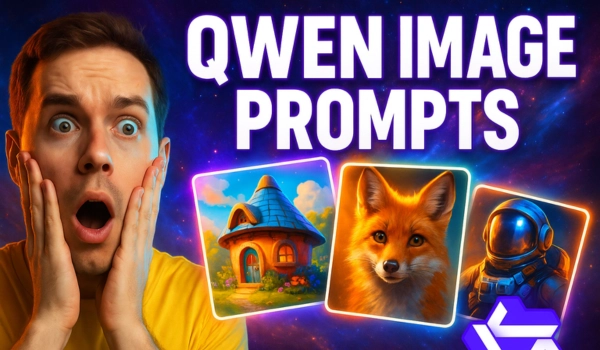
🖊️ Prompt Examples for Qwen Image Generation
🎭 Surreal Narrative Scene
Prompt:
A dreamlike scene of a man standing on a giant clock submerged in a crimson ocean, melting clouds in the sky, moon made of shattered glass, floating letters around him, in the style of Salvador Dalí and Moebius, surreal, high contrast
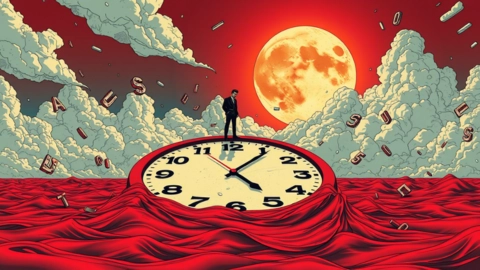
Explanation:
A bold use of symbolic and poetic language interpreted visually:
- Anchored by surreal artists (Dalí, Moebius)
- Uses metaphorical yet visually-renderable elements (melting clouds, shattered moon)
- Keywords like “high contrast” help define the mood
Great for conceptual illustrations, book covers, or narrative-driven artwork.
🧠 Conceptual Sci-Fi Scene
Prompt:
A hyper-realistic futuristic library in orbit above Earth, glowing with blue holographic bookshelves, glass floors revealing the planet below, ambient starlight reflections, ultra-detailed 8K, cinematic lighting, style of Syd Mead meets Studio Ghibli

Explanation:
This prompt combines:
- Environment (a spaceborne library)
- Lighting and atmosphere (ambient starlight and glowing bookshelves)
- Hybrid visual style — Syd Mead for industrial sci-fi design, and Studio Ghibli for warm, whimsical tones
- Technical descriptors like “ultra-detailed 8K” and “cinematic lighting”
It’s an example of how to blend hard sci-fi with artistic softness without overwhelming the model.
🏙️ Isometric Architecture Visualization
Prompt:
Isometric view of a futuristic eco-city with floating gardens, solar panel skyscrapers, autonomous drone traffic, glowing water canals, rendered in flat vector illustration style, clean lines, pastel colors, infographic-ready
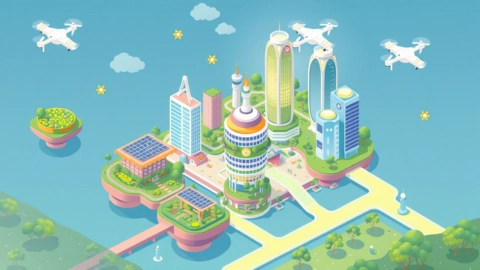
Explanation:
This example is ideal for urban design, architecture, or UI/UX visuals:
- Isometric view for technical layout
- Flat vector style makes it readable and presentation-friendly
- Includes details about eco-features and color palette
Shows how prompts can be optimized not just for art, but for functional design outputs.
🌧️ Neon City at Night
Prompt:
A neon-lit alleyway in Tokyo at night, rain-soaked pavement reflecting pink and blue lights, lone figure with umbrella, cyberpunk atmosphere, photorealistic style
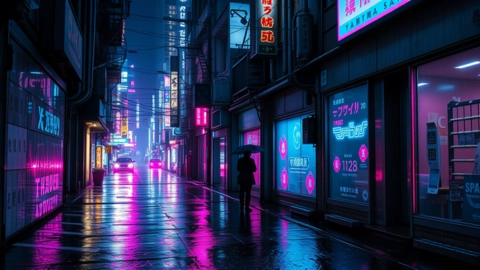
Why it works:
- Setting: “Tokyo at night” gives a clear location and mood.
- Lighting & Mood: “Neon-lit”, “rain-soaked pavement” sets the ambiance.
- Subject: “Lone figure with umbrella” adds narrative.
- Style: “Cyberpunk”, “photorealistic” guides tone and technique.
🌪️ Surreal Landscape
Prompt:
A floating island in the sky, giant tree with roots hanging in midair, small cottage with smoke, pastel colors, cloudy sky, dreamlike atmosphere, watercolor style
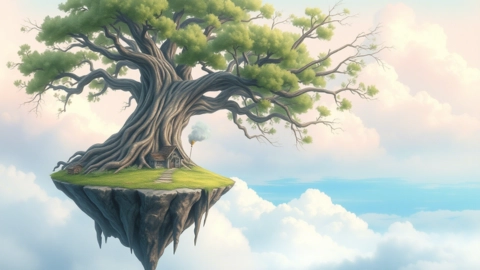
Why it works:
- Environment: Blends fantasy and detail.
- Visual Mood: Pastel + dreamlike = ethereal effect.
- Style: “Watercolor” influences texture and tone.
🌳 Nature Macro Shot
Prompt:
Macro photograph of a ladybug on a dew-covered leaf, morning sunlight refracting through water droplets, extreme detail, shallow depth of field
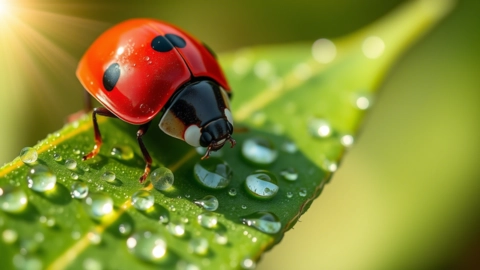
Why it works:
- Camera Angle: “Macro” = tight focus.
- Subject: Ladybug + dew = rich focal point.
- Lighting: Morning light = warmth.
- Details: Boosts sharpness.
🔬 Scientific Macro Art
Prompt:
Extremely detailed macro photograph of a bioluminescent jellyfish with fractal patterns on its tentacles, floating in deep black water, soft light glow from within, bokeh background, National Geographic photography style
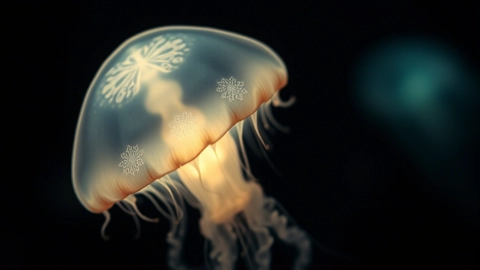
Explanation:
This prompt is perfect for natural science visuals:
- Macro photography framing + specific subject
- Details like fractal patterns and soft internal glow cue advanced lighting
- The “National Geographic” style tag guides realism and editorial accuracy
An excellent example of how to generate scientific or documentary-style imagery.
🎬 Cinematic Drama Portrait
Prompt:
Dramatic portrait of a middle-aged woman with silver hair and piercing green eyes, half-lit by a flickering candle, shadows covering half her face, background in complete darkness, Rembrandt lighting, photorealistic, high detail

Explanation:
This prompt simulates a classic cinematic photo using:
- Precise facial features and lighting style (“Rembrandt lighting”)
- High realism cues like “photorealistic” and “high detail”
- Dark emotional tone with controlled lighting
Perfect for learning how to create depth and tension in portraits through light and mood alone.
🪩 Fantasy Creature Portrait
Prompt:
Close-up portrait of a majestic forest elf queen, glowing green eyes, golden crown with ivy vines, soft bokeh background, fantasy illustration style, ultra detailed, 4K
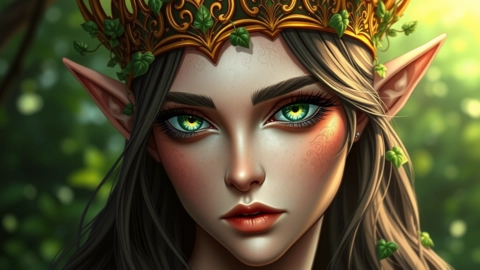
Why it works:
- Main Subject: Clearly defined character traits.
- Composition: “Close-up portrait” frames it well.
- Background: Bokeh effect adds depth.
- Art Style: Pushes clarity and genre fidelity.
🧽 Historical Realism
Prompt:
A medieval knight standing on a battlefield at dawn, worn armor with scratches, sword planted in the ground, misty field, cinematic lighting, photorealistic 8K
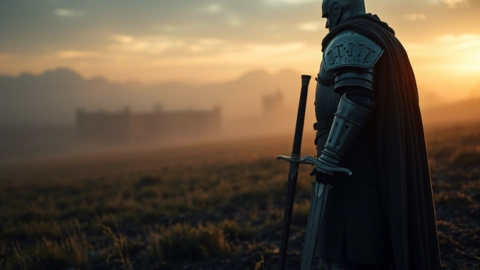
Why it works:
- Scene Composition: Captures tension and story.
- Detail: “Worn armor”, “misty field” = realism.
- Lighting: Adds emotion.
- Quality: “Photorealistic 8K” = technical clarity.
🎨 Art Style Comparison
Prompt A:
Portrait of a man in a suit, 1930s style, noir film lighting, black and white, high contrast photography
Prompt B:
Same man, but illustrated in Pixar animation style, colorful and friendly expression, soft lighting

Why it works:
- Consistent subject: Only the style changes.
- Descriptors: Strong contrast in tone/technique between prompts.
⚡ Prompt with Negative Elements
Prompt:
Futuristic city skyline at sunset, high-rise buildings with neon signs, flying cars in the sky, cinematic angle --no text, --no logos, --no watermark

Why it works:
- Scene & Subject: Clear and vivid.
- Style & Perspective: “Cinematic angle” adds drama.
- Negative Prompting: Filters out distracting elements.
Each example above was built using techniques from the main guide: clarity, composition, style, lighting, and attention to detail. Use these formats as templates—and don’t be afraid to tweak, remix, or experiment to make your own.
What Is an Image Prompt?
An image prompt is just a short text description of what you want Qwen to create. Think of it as giving instructions to a superpowered digital illustrator—you describe what you imagine, and Qwen paints it into reality.
Let’s say you type something like:
“a neon-lit alleyway in Tokyo during the rain.”
Qwen reads that, breaks it down, and builds the image piece by piece. The more specific and clear you are, the more the result will match what’s in your mind.
Prompts don’t just tell Qwen what to show—they also guide the mood, lighting, style, camera angle, and even the texture or materials in the scene. Behind the scenes, Qwen is translating your words into visual building blocks based on its deep training in both language and images.
🎯 Bottom line:
- Vague prompt = generic result
- Well-written prompt = image that actually looks how you want
It’s that simple—and that powerful.
🧠 Basic Principles for Writing Good Prompts
Before getting fancy, start with a strong foundation. These five rules will help you write better prompts for Qwen and make your images way more accurate and impressive 👇
1. Be clear and specific
The more precise you are, the better Qwen understands you. Instead of “a dog,” say “a small golden retriever puppy with muddy fur, sitting in a forest after rain.” Add details like breed, color, expression, or location. A vague prompt makes Qwen guess—and its guesses might not match your vision.
2. Keep it short, but focused
You don’t need to write a novel. Use simple, direct sentences packed with relevant info. One or two lines is usually enough if they’re well-structured. Skip the filler—every word should help guide the image. ✍️
3. Use the right adjectives
Words like “photorealistic,” “moody,” “detailed,” “pastel-colored,” or “futuristic” tell Qwen what kind of vibe you’re after. Adjectives shape the style and tone, so choose them with intention. Think of them as your artistic filter. 🎨
4. Stick to one style
Don’t mix conflicting ideas like “realistic cartoon oil painting.” That just confuses Qwen. Pick a consistent visual direction, and keep everything aligned with it. Want it cinematic? Go all in on that. Want it cute and minimal? Stick with that vibe.
5. Give enough context
If your image includes movement, interaction, or relationships, make that clear. Saying “a robot holding a sunflower in a desolate field at sunset” gives the AI much more to work with than just “a robot with a flower.” Context adds depth 🌅.
🎯 Essential Elements of an Effective Image Prompt
A great prompt isn’t just one sentence pulled from your imagination—it’s a combination of the right elements. Each part adds structure to what Qwen will generate. Here’s how to break it down 👇
🧍♂️ Main subject (what or who appears)
Define the main character or central object of the image. What exactly do you want Qwen to focus on?
If it’s a person or creature, include relevant traits like age, gender, ethnicity (if useful and not stereotyped), clothing, and unique physical features like hair, eyes, or facial expression. Example: “a young woman with silver hair and glowing eyes, wearing a long red cloak.”
If it’s an object, mention its condition (new, rusty, broken), material, and color. And don’t forget to describe the pose or action—what’s the subject doing? Adding verbs makes the scene feel alive. 🐈 “A black cat sitting on a branch” is way more specific than just “a cat.”
🌍 Environment and context (where it takes place)
Where is everything happening? Set the scene with details about the background and location.
Mention if it’s indoor or outdoor, and what kind of space: “a neon-lit alley,” “a post-apocalyptic desert,” “a cozy cabin in the woods,” etc. This gives Qwen a clear visual setting to work with.
You can also include secondary elements that bring the world to life—like trees, buildings, mountains, furniture, or even weather effects (fog, snow, rain 🌧️). And if there are other characters or objects in the scene, say so. That adds story and depth to the final image.
🎥 Composition and Point of View (Framing the Image)
The way you “frame” your scene has a big impact on how Qwen builds the image. Just like a photographer or director chooses how to shoot something, you can guide Qwen with visual cues 🧭
🔭 Perspective or camera angle
Tell Qwen where the “camera” is placed. Is it:
- Eye-level (natural and neutral)
- High angle (looking down)
- Low angle (looking up)
- Bird’s-eye view (top-down)
- Close-up (zoomed in on a face or object)
Example prompts:
- “close-up of an old man’s wrinkled face”
- “aerial view of a futuristic city”
- “low-angle shot of a giant robot under stormy skies”
These angles change the mood and power of the scene 📸
🖼️ Composition
This is how the elements are arranged in the image. Mention concepts like:
- Centered composition
- Rule of thirds
- Negative space
- Foreground and background separation (e.g., “subject in foreground, background blurred with bokeh”)
You can also note if you want a symmetrical setup or something more chaotic and unbalanced—this helps Qwen know where to place things and how the scene should feel.
🔍 Focal length or lens type (optional)
Want a specific camera look? You can simulate it by mentioning a lens type:
- Wide-angle: exaggerates depth, great for landscapes
- Macro: close-up on tiny details (insects, textures)
- Telephoto: compresses background and brings distant things forward
- Fisheye: gives a warped, curved perspective
Example:
- “macro shot of a dewdrop on a leaf”
- “telephoto portrait of a lion with sunset in the background”
These choices affect scale, focus, and the image’s overall style 🎯
💡 Lighting and Atmosphere
Lighting doesn’t just show what’s in the scene—it sets the mood. Whether you want something dreamy, dramatic, or dystopian, the light is what makes it feel that way 🌤️
🔆 Describe the light source
Mention what kind of light the scene has and how it behaves:
- Natural sunlight
- Soft studio lighting
- Harsh spotlight
- Neon glow
- Candlelight
- String lights
You can also include the time of day, which changes everything:
- Golden hour sunrise
- Midday brightness
- Warm orange sunset
- Night with blue moonlight
Each of these gives Qwen a very different vibe to work with 🌇🌙
🌧️ Include environmental conditions
Weather helps complete the atmosphere. Is it a clear sky, foggy morning, rainy evening, or snow-covered night? If it’s an indoor scene, you might describe dim mood lighting or colorful LED strips—anything that helps set the tone.
Example: “soft morning light filtering through the trees” creates a gentle, peaceful image full of warmth and detail.
🌀 Mention the emotion or mood
Don’t forget the feeling you want the image to express. Should it feel:
- Calm or chaotic?
- Melancholic, romantic, mysterious?
- Cheerful, tense, surreal?
Try to match the lighting and colors to that mood. Qwen uses that emotional tone to decide how to style shadows, highlights, and the color palette 🎨
🎨 Artistic Style and References
The style you choose can completely change how your image looks. Want something painterly and dreamlike? Or clean, modern, and digital? Qwen can do both—but only if you tell it clearly.
🖌️ Medium or technique
Describe how you want the image to be rendered. Should it look like:
- a photograph
- a watercolor painting
- a digital illustration
- a 3D render
- a pencil sketch
- or something else?
Keywords like “photorealistic,” “pixel art,” “comic book style,” “anime,” or “oil painting” help Qwen match the visual feel you’re aiming for.
👨🎨 Reference specific artists or styles
If you want a very distinct look, mention an artist or art movement Qwen is likely to recognize. For example:
- “in the style of Vincent van Gogh” → bold brushstrokes and vibrant colors
- “Studio Ghibli-style illustration” → soft lines, whimsical environments
- “surrealism like Salvador Dalí” → strange landscapes and dream logic
You can also use combined references like:
- “80s sci-fi movie cinematography”
- “film noir photography style”
- “Baroque fantasy illustration”
These help shape both the aesthetic and the mood 🧠✨
🌈 Color palette or visual tone
Colors affect the entire vibe of an image. You can guide Qwen by mentioning things like:
- “soft pastel colors”
- “warm and saturated palette”
- “cool muted tones”
- “high-contrast black and white”
This works especially well when paired with a medium (e.g., “vintage poster in sepia tones” or “bright anime with saturated colors”).
🔀 Examples of combined styles
Qwen handles mixed styles well—just keep them compatible. Try things like:
- “vaporwave digital art with neon glow and 80s retro elements”
- “ultradetailed fantasy scene in steampunk comic style”
Describing a style clearly helps Qwen get the look and feel right.
For example: “impressionist oil painting” will give you a totally different result than “black and white documentary photo.”
🧬 Level of Detail and Technical Quality
Want your image to look extra sharp, polished, and professional? 🔍 Then you need to guide Qwen with the right keywords. This part of the prompt tells the AI how much detail, quality, and precision to aim for.
✨ Detail
Use words that push Qwen to focus on the tiny stuff:
- “ultradetailed”
- “intricate”
- “high definition”
- “realistic textures”
- “4K” / “8K”
These terms signal: “zoom in and make it clean.”
Example: “ultradetailed masterpiece, high fidelity” is a common phrase used to boost visual sharpness and texture quality.
🏆 Quality
Certain words help increase the overall visual polish:
- “masterpiece”
- “high quality”
- “photorealistic”
These have become popular in AI image communities to nudge the model toward its maximum capability.
📝 Note: Not all models react the same—some may ignore these terms, but others (especially diffusion-based ones) do respond with better results.
🖼️ Resolution and format
If the tool you’re using supports it, you can suggest a specific aspect ratio or layout:
- “panoramic format 16:9”
- “vertical poster format 2:3”
- “square image for profile picture”
Some platforms (like MidJourney) use separate syntax (e.g., --ar 16:9), but in Qwen you can just describe it in your prompt. It’s a great way to control composition and how the image is framed.
⚠️ Avoid technical confusion
Be careful with vague phrases like “photography of high resolution”—that can be interpreted oddly if you’re going for a digital art look.
If you want something realistic, say “high-res photograph”.
If you want a 3D look, say “detailed 3D render”.
Clear phrasing = better results 🎯
🧩 In summary: Mixing detail, format, and quality terms in your prompt helps Qwen “see” your vision more precisely—just like giving an illustrator clear instructions. The better you describe the look, the better the output will match it.
🧠 Advanced Techniques to Achieve Precise Results
Once you’ve got the basics down, there are a few next-level tricks you can use to get exactly the image you want. These are the techniques that experienced users lean on to refine their results and push Qwen even further 🎯
🚫 Use of negative prompts
Sometimes, the best way to improve an image is by telling the AI what you don’t want.
A negative prompt is a line or field where you list unwanted elements like:
- “no text”
- “no watermark”
- “no logo”
- “no blurry details”
This is great for avoiding artifacts that might show up often. Some tools have a dedicated box for this; others let you type it directly into the prompt. Either way, it’s a powerful filter that helps clean up your results.
🏗️ Emphasis and word weighting
Some models (like Stable Diffusion) let you emphasize specific words using punctuation—usually with parentheses () or values like :1.5.
Example:
- “medieval castle:1.3” → gives more weight to that part
- “castle:0.8” → tells the model it’s less important
Qwen might not support syntax like that yet, but the concept still helps: if something is really important, repeat it, describe it clearly, or put it early in the sentence to draw more focus.
🔁 Iterative testing and progressive tweaks
Let’s be honest—your first image probably won’t be perfect. And that’s fine!
Prompt engineering is iterative. You’re meant to adjust and test versions until it clicks.
Did the AI add something weird? Add a negative prompt to remove it.
Was something too subtle? Use stronger adjectives like “glowing,” “massive,” or “cracked.”
Need more focus on the main character? Rephrase or move that part of the prompt to the front.
Some tools (including Qwen) even allow you to regenerate based on the previous result, which makes this process faster and smarter 🔄
🔧 Prompt tools and assistants
There are AI-powered helpers that make prompt writing easier—some are even built into Qwen-compatible tools like QwenVision.
You can also use:
- Prompt libraries (to get keyword inspiration)
- CLIP Interrogators (to reverse-engineer existing images)
- Prompt builders (that guide you step-by-step)
These tools help you expand your vocabulary and sharpen your structure 💬
🌐 Consider the language
💡 Pro tip for bilingual users: most image AIs were trained primarily in English. If your result in another language feels off, try switching to English for better structure and recognition.
That’s changing slowly—but for now, English prompts often give more control and detail.
⚖️ Balancing detail with weighting
Even if you can’t manually assign weights (like “castle:1.5”), you can simulate the effect by:
- Repeating key elements
- Rephrasing with stronger language
- Structuring your sentence to prioritize what matters
This helps you avoid messy layouts or disproportionate results.
✅ In short: These advanced techniques let you clean up unwanted results, spotlight what matters, and interact more smartly with Qwen. They’re the difference between a good image… and one that’s exactly what you pictured in your head.
❌ Common Mistakes When Creating Prompts (And How to Avoid Them)
Even experienced users fall into these traps! Here’s a breakdown of the most frequent prompt-writing mistakes—and how to fix them so Qwen delivers images that actually match what you had in mind 🎯
🪫 Prompt too vague or broad
If you type something like “a man in a landscape,” don’t expect much. That kind of vague input leads to generic, flat images.
✅ Instead, be visually descriptive:
- Who is the man? (age, clothing, mood?)
- What kind of landscape? (mountains? desert? forest?)
- What is he doing?
🔁 Remember: the AI fills in what you don’t describe. And what it fills in may not be what you expect.
⚔️ Contradictory or confusing descriptions
Mixing styles like “realistic” and “cartoonish” in the same prompt? That confuses the model 🤯
✅ Keep your style coherent:
- Pick a dominant tone (photographic, surreal, illustrated…)
- If you need different styles for different parts, separate them clearly in the prompt.
🧠 Simple = powerful. Overloaded prompts make the output messier.
📚 Too much irrelevant info or novel-style writing
Writing your prompt like a chapter from a book won’t help the AI. Long, emotional intros or abstract “vibes” don’t translate into visual results.
❌ Example:
“A beautiful scene from my childhood where I possibly remember playing in a garden.”
✅ Better:
“A child playing with a red ball in a sunny garden, flowers in the background.”
Stick to concrete visual elements. That’s what the AI understands.
🚫 Not using negative prompts when needed
If your image keeps getting ruined by unwanted text, extra limbs, or blurry junk—use a negative prompt.
Just add something like:
“no text, no watermark, no extra fingers, no artifacts.”
🛠️ Some tools have a special box for this. If not, add the phrase right in the prompt. It works.
🧱 Ignoring the model’s limits
Every AI has its quirks. If Qwen struggles to generate a complex historical object or flawless human hands—it’s not your fault.
✅ Solution:
- Be flexible with your request
- Or switch to another model/tool specialized in that style
💡 Pro tip: if the model has a known weakness (like hands or readable text), either describe it more carefully, or avoid it.
🌀 Not refining the prompt after generation
Don’t expect perfection on the first try. AI art is iterative.
❌ Mistake: Generate once → not perfect → give up
✅ Fix: Tweak the wording → try again → improve with each version
Every prompt is a draft you can build on 💪
🔒 Forgetting about safety/content filters
If a prompt won’t generate or gives you an error, you may have triggered a content filter—even if the idea seems totally legit.
🛡️ Try:
- Rewording the sensitive part
- Using a softer or more indirect phrasing
- Reviewing the platform’s policy
AI understands nuance—but you need to guide it smartly.
⚖️ Too little detail… or way too much
Some prompts are too short: “fantasy scene, colorful.” → Result: boring.
Others are endless lists of micro-instructions. That overloads the AI.
✅ Best practice:
- Focus on the essentials: who, what, where, how, and style
- Write in clear, simple phrases
- Add extra detail as you iterate
🔁 Start with a clean base, then refine from there.
Spotting and fixing these mistakes will instantly level up your prompt game. The goal isn’t to write perfect prompts—just to make each one better than the last.
🏁 Conclusion and Final Tips
Creating amazing images with Qwen—or any AI model—starts with one thing: a great prompt. The clearer, more specific, and better structured your prompt is, the better your results will be. Every section in this guide was built to help you write prompts that truly translate your imagination into visuals 🎨
But here’s the truth: the only real way to get better is to practice. Try different approaches, compare the results, tweak your words, and repeat. Over time, you’ll develop a kind of “prompt instinct”—you’ll just know which words lead to certain styles, moods, or compositions.

